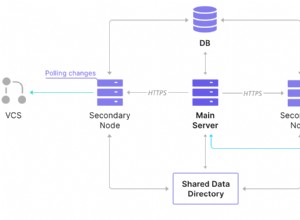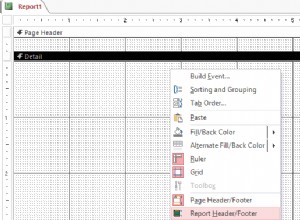Do raportowania skuteczności zdarzeń używam następujących elementów.
Zwróć uwagę, że może obsłużyć tyle oddzielnych zdarzeń (na przykład N zdarzeń, które kodujesz osobno), ile chcesz do niego zgłosić.
To, co robisz jako Kroki w swoim wydarzeniu, zależy od Ciebie. Mam odniesienie w Wydarzeniu poniżej do nie pokazanej tutaj tabeli, a także do tego, co robię w Wydarzeniu, które jest dostosowane do tej jednej firmy. Pokazanie tego wszystkiego sprawiłoby, że odpowiedź byłaby zbyt długa. Jeśli jesteś programistą wydarzeń, znajdziesz swoje użyj do tego.
Ponadto WHILE pętla w moim wydarzeniu może nie być najlepsza, dopóki nie zakodujesz prostych zdarzeń bez nich. Jeśli nie wyskoczysz bezpiecznie z WHILE, Twoje wydarzenie będzie trwać wiecznie. Więc miej to na uwadze, jeśli cokolwiek tutaj.
Schemat
Poniższa tabela jest używana przez zdarzenie w górnej części jego kodu, aby wykonać wstawienie względem niego, wyłącznie w celu uzyskania unikalnego id powrót do użycia we wkładkach do stołu dziennika. Rozwiń go o kolumnę daty i godziny lub coś podobnego. Pokazuje trywialne usedBy kolumnę, aby uchwycić przynajmniej coś, na przykład nazwę zdarzenia. Głównie chce z powrotem przypisanego auto_increment (id ).
drop table if exists incarnations;
create table incarnations
( -- NoteA
-- a control table used to feed incarnation id's to events that want performance reporting.
-- The long an short of it, insert a row here merely to acquire an auto_increment id
id int auto_increment primary key,
usedBy varchar(50) not null
-- could use other columns perhaps, like how used or a datetime
-- but mainly it feeds back an auto_increment
-- the usedBy column is like a dummy column just to be fed a last_insert_id()
-- but the insert has to insert something, so we use usedBy
);
Ogólna tabela rejestrowania znajduje się poniżej:
drop table if exists EvtsLog;
create table EvtsLog
( id int auto_increment primary key,
incarnationId int not null, -- See NoteA (above)
evtName varchar(20) not null, -- allows for use of this table by multiple events
step int not null, -- facilitates reporting on event level performance
debugMsg varchar(1000) not null,
dtWhenLogged datetime not null
-- tweak this with whatever indexes your can bear to have
-- run maintenance on this table to rid it of unwanted rows periodically
-- as it impacts performance. So, dog the rows out to an archive table or whatever.
);
Przykładowe wydarzenie
-- Now the event kicks in on the server on its interval schedule and processes the batch.
-- But we need to modify that Event code because prior all it did was write a row to the log table
-- saying it was looking around. But it didn't actually do anything
drop event if exists `Every_2_Minutes_QuestionUpdateImport`;
DELIMITER $$
CREATE EVENT `Every_2_Minutes_QuestionUpdateImport`
ON SCHEDULE EVERY 2 MINUTE STARTS '2015-09-01 00:00:00'
ON COMPLETION PRESERVE
DO BEGIN
DECLARE bContinue bool default true;
DECLARE counter int default 0;
DECLARE logMsg varchar(1000);
DECLARE incarnationId int default 0;
DECLARE evtAlias varchar(20);
-- right here you could save `now()` into a variable, let's call it STARTEVT
set evtAlias:='ev2minQUI'; -- a shorter unique alias name, max 20 chars
-- Below we must acquire our incarnation id from the control table used for all events
-- that want to use it. It facilitates performance reporting with the use of the `steps` column and the datetime
-- that are put in the EvtsLog table
insert incarnations(usedBy) values (evtAlias); -- see NoteA
select last_insert_id() into incarnationId; -- an auto_increment handed to us by the control table
insert EvtsLog(incarnationId,evtName,step,debugMsg,dtWhenLogged)
select incarnationId,evtAlias,1,'Event Fired, begin looking',now(); -- 1: we are beginning
WHILE bContinue DO -- this is an intermediate-level skills event example. Be careful or you are stuck in the event forever
select min(batchId) into @idToPerform
from EvtsQuestionsToImportBatchHandler -- table not shown in this post on Stackoverflow
where batchStatus=1; -- @idToPerform, a variable, will be null if there is no such row
insert EvtsLog(incarnationId,evtName,step,debugMsg,dtWhenLogged)
select incarnationId,evtAlias,5,'Debug Place 1',now();
IF (@idToPerform IS NOT NULL) THEN
-- This next update line is very crucial, to mark the batch as underway and never picked up again
-- at the top of this WHILE loop (otherwise you may be stuck in here forever)
update EvtsQuestionsToImportBatchHandler set batchStatus=2,dtProcessBegan=now() where [email protected];
set counter:=counter+1; -- used outside of the while loop in the end
insert EvtsLog(incarnationId,evtName,step,debugMsg,dtWhenLogged)
select incarnationId,evtAlias,10,"a message maybe from concat and variables",now();
--
-- Here is where you actually do something
-- Here is where you actually do something
-- Here is where you actually do something
insert EvtsLog(incarnationId,evtName,step,debugMsg,dtWhenLogged)
select incarnationId,evtAlias,20,"a message maybe from concat and variables",now();
-- Here is where you actually do something
-- Here is where you actually do something
-- Here is where you actually do something
insert EvtsLog(incarnationId,evtName,step,debugMsg,dtWhenLogged)
select incarnationId,evtAlias,30,"a message maybe from concat and variables",now();
-- mark this batch as done:
update EvtsQuestionsToImportBatchHandler set batchStatus=3,dtProcessFinished=now() where [email protected];
ELSE
set bContinue=false; -- we are done with the event loop
END IF;
-- if bContinue is true, we will seek the next batch to process that has batchStatus=1, if there is one
-- right here a new now() could be performed, and a timediff() against the STARTEVT
-- to determine if you want to bail out also with a " set bContinue=false; "
END WHILE; -- this is an intermediate-level skills event example. Be careful or you are stuck in the event forever
-- this msg is crucial to see in the log table to know you are not locking in an endless WHILE loop
set logMsg:=concat("Number of batches processed=",counter); -- concat example (could have been used above)
insert EvtsLog(incarnationId,evtName,step,debugMsg,dtWhenLogged)
select incarnationId,evtAlias,90,logMsg,now(); -- 90: we are almost done
insert EvtsLog(incarnationId,evtName,step,debugMsg,dtWhenLogged)
select incarnationId,evtAlias,99,'Event Done',now(); -- 99: we are done
END$$
DELIMITER ; -- sets the delimiter back to what we are used to, the semi-colon
Oczywiście otrzymujesz raportowanie wydajności względem tabeli dziennika, która zawiera incarnationId , evtName , step , a data i godzina. Poniższe zapytanie zwija informacje o zdarzeniu wielowierszowym do 1 wiersza na uruchomienie zdarzenia, z różnicą czasu.
select incarnationId,dtBegin,dtEnd,TIMESTAMPDIFF(SECOND,dtBegin,dtEnd) as secDiff
from
( select incarnationId,min(dtBegin) as dtBegin,max(dtEnd) as dtEnd
from
( select incarnationId,
case
when step=1 then dtWhenLogged
end as dtBegin,
case
when step=99 then dtWhenLogged
end as dtEnd
from evtsLog
where evtName='evtName01'
) d1
group by incarnationId
) d2;
+---------------+---------------------+---------------------+---------+
| incarnationId | dtBegin | dtEnd | secDiff |
+---------------+---------------------+---------------------+---------+
| 101 | 2016-05-01 14:02:00 | 2016-05-01 14:02:01 | 1 |
| 102 | 2016-05-01 14:02:01 | 2016-05-01 14:02:07 | 6 |
+---------------+---------------------+---------------------+---------+
Aby uzyskać dokładniejsze raportowanie w mikrosekundach, wymagany jest MySQL 5.6.4 lub nowszy. Zobacz tę odpowiedź .
Zdarzenia są trudne do napisania, ponieważ nie ma z nimi żadnego UX. Korzystając z tabeli rejestrowania, możesz nie tylko uzyskać raportowanie wydajności, ale także uzyskać wgląd w komunikaty debugowania podczas ich opracowywania.
Nie zapomnij przyciąć tabeli kłód, aby kontrolować jej rozmiar. Być może zarchiwizowanie go gdzieś (może za pośrednictwem innego wydarzenia!).




